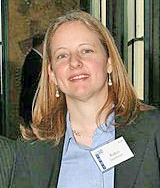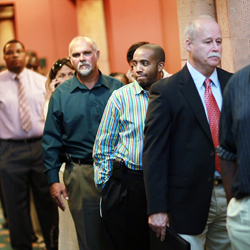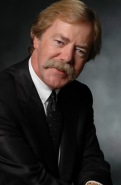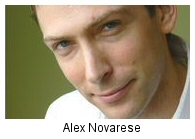5 Ways To Avoid Referral Mishaps
When lawyers are conflicted from working on a case, having a good referral system in place not only helps clients connect with attorneys who have the specific expertise they want, it can boost lawyers’ ability to generate more business for their firm in return.
However, referring legal work involves much more than looking up an attorney in the phone book, and if it’s not done right, lawyers who thought they were doing someone a favor could find themselves tied up in a malpractice case, according to an article in Law360.
Have a Referral Plan of Attack
A client who needs a referral can come up out of the blue, but that doesn’t mean the lawyer can’t be ready ahead of time,
“Referrals can be a random event, and what I recommend is that lawyers make it planned. Have lawyers lined up in advance, so you have had a chance to screen them, meet with them and establish a relationship. If they get work that you do, they are going to refer work back.
Do Your Homework
What you need to know is that if you send over a client, the attorney is going to treat that client as well as you would. The danger is an attorney takes the referral and it goes to the bottom of the to-do list.
Disclose Why You’re Making the Referral
Referral fees are commonly paid in litigation and are usually one-third of the amount recovered, but they can also be charged in transactional cases and tend to be one-third of the fee earned. While some states prohibit referral fees, most states permit them as long as they are disclosed to the client and the client signs a written confirmation.
Clients don’t usually care, but all they want is to know. A lawyer should pay attention to how referrals are communicated to clients so they understand they are not being shuffled off, but being specifically transferred to someone who is a specialist.
Consider Your Options
If lawyers don’t have a particular expert in mind, they can always have individuals contact the local bar association or public service referral program, according to Jane Nosbisch, staff counsel for ABA’s standing committees on lawyers’ professional liability.
“By sending an individual to a public referral program, there is no disengagement letter required, and because the lawyers have no economic interest in the program, nothing needs to be disclosed,” she said.
Courts look more favorably on referrals made to a public service network than those made to individual attorneys when examining the issue of negligent referral liability, she said.
“When a lawyer makes a referral to another attorney, the courts are more concerned over what the pecuniary interests are in making that referral,” she said. “They are concerned about the ability of the client to trust that referral.”
Keep Tabs on the Referred Case
Lawyers who forward a case on to another attorney need to stay in touch to see how the case is proceeding.
By sending a letter to the attorney receiving the work, lawyers can make it clear that they have a right to know what is going on in the matter and can insist on getting copies of all correspondence and pleadings that are issued in the case.
It’s the ultimate insurance. You’re making a lot of work for yourself, but that’s the best way to get the job done right.
 According to responses to a new survey, the top criteria corporations use to hire or fire law firms are:
According to responses to a new survey, the top criteria corporations use to hire or fire law firms are: A straw poll of 21 managing partners at New York law firms revealed guarded optimism about hiring trends and demand for legal services in 2011. Only two of the 21 respondents said that they anticipated legal work would decrease next year, while more than 50 percent expected to hire the same number or slightly more first year associates than in 2010.
A straw poll of 21 managing partners at New York law firms revealed guarded optimism about hiring trends and demand for legal services in 2011. Only two of the 21 respondents said that they anticipated legal work would decrease next year, while more than 50 percent expected to hire the same number or slightly more first year associates than in 2010. If you don't know the difference between a “bear hug letter” and “accordion feature,” perhaps you should download Latham & Watkins new
If you don't know the difference between a “bear hug letter” and “accordion feature,” perhaps you should download Latham & Watkins new  I sat next to author and lawyer
I sat next to author and lawyer  Robin Sparkman has been promoted to editor in chief of The American Lawyer and will also oversee the company's large law firm content team.
Robin Sparkman has been promoted to editor in chief of The American Lawyer and will also oversee the company's large law firm content team.  In a statement that strains credulity, the The National Bureau of Economic Research, an independent group of economists, announced that the Great Recession ended in June 2009.
In a statement that strains credulity, the The National Bureau of Economic Research, an independent group of economists, announced that the Great Recession ended in June 2009. Joshua Fruchter, Esq., author of the
Joshua Fruchter, Esq., author of the .png) This just in: Another meaningless ranking. Another huge chore for law firms.
This just in: Another meaningless ranking. Another huge chore for law firms.  The good news is that "At best, we may have reached a bottoming out," says a bleak new midyear economic report on large law firms from the Law Firm Group at
The good news is that "At best, we may have reached a bottoming out," says a bleak new midyear economic report on large law firms from the Law Firm Group at  Many are the ways that a lawyer can annoy a client, such as failing to return phone calls quickly, leaving no one in an office to field an emergency call from a client, and failing to learn the business of the client.
Many are the ways that a lawyer can annoy a client, such as failing to return phone calls quickly, leaving no one in an office to field an emergency call from a client, and failing to learn the business of the client..gif) Brinks Hofer, the 170-lawyer intellectual property law firm, just
Brinks Hofer, the 170-lawyer intellectual property law firm, just  No matter which statistic you pick, 2009 was a bad year for small to mid-sized law firms, according to the new
No matter which statistic you pick, 2009 was a bad year for small to mid-sized law firms, according to the new  Equity partner compensation averaged $358,000, slightly up from 2008, but down from a 2007 high of $374,000.
Equity partner compensation averaged $358,000, slightly up from 2008, but down from a 2007 high of $374,000..gif) At .56 to 1, the ratio of associates to partners is at its lowest level in 25 years. This reflects the widespread layoffs of lawyers in 2009 and the cutbacks in hiring by midsized law firms. Firms of 21-150 saw declines of 11% or worse in the ratio.
At .56 to 1, the ratio of associates to partners is at its lowest level in 25 years. This reflects the widespread layoffs of lawyers in 2009 and the cutbacks in hiring by midsized law firms. Firms of 21-150 saw declines of 11% or worse in the ratio. Following is a post by Canadian strategist Patrick J. McKenna on his
Following is a post by Canadian strategist Patrick J. McKenna on his  Well, fast forward a year and here’s an editorial from Alex Novarese at Legal Week, wherein Alex postulates that maybe someone called for a revolution but nobody came.
Well, fast forward a year and here’s an editorial from Alex Novarese at Legal Week, wherein Alex postulates that maybe someone called for a revolution but nobody came. This year the prestigious Marketing The Law Firm 50 will focus on business development. You have until September 24 to get your submission in.
This year the prestigious Marketing The Law Firm 50 will focus on business development. You have until September 24 to get your submission in.


